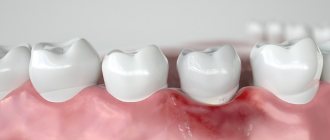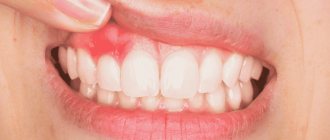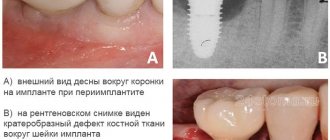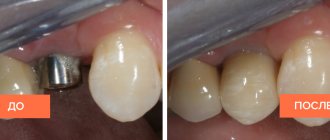In modern dentistry, when treating caries at different stages, doctors often install light fillings. This is explained by the advantages of photopolymer composite material compared to the traditional composition. The light filling looks natural (often the color does not differ from tooth enamel), is resistant to stress, and less toxic. In addition, its installation is easy and does not take much time.
To maintain the results obtained by the dentist, you must follow several recommendations. And then the material will not peel off and collapse.
Many patients are interested in the question of how long they should not eat or drink after the doctor fills a tooth with composite material. And in general, are there any restrictions? Now we will tell you everything in detail.
What is a light seal?
The photopolymer composite material that the dentist uses consists of a mixture of resins, silanes and filler.
It hardens when exposed to ultraviolet radiation, so when filling a tooth, the doctor uses a special lamp that creates waves with a length of 450 Nm in the blue spectrum. For a high-quality result, he applies the composite material layer by layer, exposing each layer to light. At this stage, primary polymerization occurs. Then, within 24 hours, the chemical bonds stabilize and the filling finally hardens. In this regard, the doctor gives certain recommendations, compliance with which guarantees the durability of the material - the filling lasts 5 years or more.
Why is it important to follow your dentist's recommendations?
Modern methods and technologies for caries treatment, which are used by doctors in dental clinics, help quickly, painlessly and effectively solve the problem of dental caries. If the doctor correctly selected the filling material and installed the filling in compliance with all technological details, the restored tooth can serve the patient for many years.
But, in addition to the professional work of the doctor and the quality of materials, the durability of the filling is affected by compliance with the dentist’s recommendations immediately after caries treatment.
One of the first questions to ask your doctor is when you can drink water and have lunch or dinner after dental treatment.
Advantages of photopolymer material
This differs from other types of composite materials:
- The ability to control the hardening process. The doctor fills the tooth without haste, applying layers of material as carefully as possible. The composition is plastic, hardens only when exposed to an ultraviolet lamp.
- Safety for the patient's health. Photopolymer material is characterized by low toxicity, so it is used even in pediatric dentistry.
- The ability to create a filling of the desired shade. She won't stand out.
- Durability. It is due to good adhesion to hard tissues. Typically, the service life of a photopolymer filling is at least 5 years. With careful handling and high-quality teeth cleaning, its service life increases.
- Ease of finishing. The composite can be polished well, so the filling does not create discomfort - it will not scratch the mucous membrane of the tongue and cheeks.
An experienced dentist can easily give the crown the desired shape, so the filled tooth looks natural.
Teeth brushing, additional items and hygiene products
Naturally, your teeth need to be brushed thoroughly. And teeth with fillings need to be cleaned even more thoroughly. There are several rules for this:
- The duration of brushing your teeth should be 2-3 minutes. Not less. You don’t need more either, you can damage your tooth enamel.
- Brush your teeth with sweeping movements from the gums to the chewing surface. Clean each surface of the teeth in turn, for example, first the outer ones, then the inner ones, then the chewing ones.
- Use dental floss. This is a special thread that you can clean between teeth that are difficult to reach with a brush.
- Buy an irrigator - this device for cleaning teeth with a jet of water under pressure ideally removes plaque. In combination with proper brushing of teeth, the irrigator gives an amazing effect, eliminating problems with teeth and gums for a long time.
- Don't get carried away with whitening pastes. They always contain an abrasive substance that will scratch the surface of the fillings. These scratches will gradually fill with food pigments and the original shine will disappear.
- Use mouth rinses after brushing your teeth; they keep your mouth fresh longer and have a beneficial effect on your teeth and gums.
- Avoid rough foods; the filling is made of a composite - in other words - plastic and can easily crack or even break off with part of the tooth. Let me remind you that we are talking about rough food - crackers, chocolate-covered roasted nuts or nuts with shells.
Types of light seals
The dentist chooses a photopolymer material depending on the location of the tooth and the task at hand - will it be caries therapy or the elimination of a non-carious defect on a unit.
There are 3 types of material:
- consisting of large particles - preferable for chewing molars, such a filling will be resistant to abrasion;
- consisting of microparticles - relevant in the case of treating caries on the front teeth and restoring the aesthetics of the units;
- nanocomposite - durable, reliable, aesthetic, but has a higher cost.
Before deciding to install a light filling, the doctor will definitely evaluate the location of the caries. If the lesion is in a hard-to-reach place, you will have to choose another material due to the impossibility of high-quality polymerization.
Filling falling out during pregnancy
If a temporary filling falls out in a pregnant woman, it is also important to consult a specialist. If at the time of treatment she is in her third trimester, and a complex dental procedure is ahead, the doctor can install a new “temporary” and transfer the therapy to the postpartum period.
It is worth remembering that pregnancy is not a contraindication for visiting the dentist. On the contrary, it is better to visit this doctor more often to prevent the progression of caries. After all, this is a collection of microbes that can spread throughout the body and cause harm to health.
When can a light seal be placed?
The photopolymer composition is considered universal, therefore it is widely used in dentistry. There are a large number of pathologies for which the dentist prefers this composite, including:
- caries;
- erosion and necrosis of enamel;
- fluorosis;
- wedge-shaped defect;
- pulpitis and periodontitis (light filling is placed at the final stage of disease treatment);
- dental injuries and chipped enamel;
- pathological abrasion of units (a photopolymer filling is installed for temporary restoration of the tubercles).
In addition, the dentist uses this filling material to give the stump the required size and shape before prosthetics with fixed dentures. Thanks to a wide palette of shades and good strength after hardening, the photopolymer composition is suitable for any units in the series; it is also chosen for aesthetic restoration.
Composition of temporary filling
The main difference between temporary fillings and permanent fillings is their composition. They are usually made from the following materials:
- Artificial dentin. This is a mixture of zinc oxide and sulfate powders with distilled water.
- Vinoxol. It is a mixture of zinc oxide powder and liquid. It has good adhesion and antiseptic properties, and due to its high strength, a temporary filling made from this material can last up to six months.
- Dentine paste. White homogeneous mass with essential oils. The material is plastic, has excellent adhesion, and has water-repellent properties.
- Zinc-eugenol cement. It contains zinc oxide and clove oil or the fragrant substance eugenol. A temporary filling made from this material has good adhesion, an analgesic effect, antiseptic properties, and resistance to increased loads.
- Polycarboxylate cement. It is a mixture of zinc oxide powders, copper and liquid. It has good ductility, resistance to moisture, and excellent adhesion.
- Karyosan - zinc oxide with eugenol.
All materials have their own hardening time and the period after which food can be eaten. For each case, the dentist himself determines the type and composition for filling the cavity, which will affect the price of the temporary filling.
How is the filling installed?
First, the doctor prepares the tooth for restoration - removes pathological tissue and forms a cavity, removing softened dentin and enamel. This ensures the durability of the filling. If the tooth is severely damaged, the dentist removes the nerve, installs a pin, and only then proceeds to filling the canals and forming a crown.
Before starting work with photopolymer material, he etches the cavity with acid to clean the walls of sawdust and other foreign particles formed during drilling of the affected tissue. This manipulation helps to open the dentinal tubules, which improve the fixation of the filling.
After this, the doctor applies an adhesive material, which acts as a connecting link between the tooth and the photopolymer composition. After illuminating it, the doctor applies the filling material in small portions in layers, carefully pressing it to the bottom and walls of the cavity. Each layer is exposed to ultraviolet light. When the dentist completes the modeling, he grinds and polishes the surface of the filling.
Basic Concepts
A temporary tooth filling is also called diagnostic. It is installed by specialists to determine the condition of the nerves. For example, the doctor decided to put a temporary filling to ensure its integrity. After a few days, treatment is carried out if there is pain. Or the temporary tooth filling is replaced with a permanent one, if the patient does not experience any discomfort.
This method is also suitable for treatment. Medicines are placed into the cavity, cleared of caries. Installing a temporary filling prevents them from leaking into the oral cavity. A similar procedure is performed when removing a nerve. The nerve is destroyed by arsenic (a more modern devitalizing agent), and after some time it is necessary to clean the canals and put a filling.
Temporary construction is also used for protection during prosthetics and dental restoration. It is installed during the production of a permanent crown.
To eat or not to eat: what recommendations does the doctor give?
After installing the light seal, you can eat and drink immediately. This is its significant advantage over a cement filling. But in cases where dental procedures were performed under local anesthesia, the doctor recommends refraining from eating for 1-2 hours. This is due to the fact that due to decreased sensitivity, the patient may injure the mucous membrane of the tongue or cheeks while chewing food. The damage will cause discomfort.
Since the material will finally harden after 24 hours, you should avoid hard foods (nuts, apples, etc.). It is better to give preference to soft food. On the first day after filling, it is advisable to quit smoking. This is due to the fact that the material may turn yellow and the healing of tissues that have been exposed to dental treatment may deteriorate.
To maintain the aesthetic appearance of the filling, for 2-3 days you should not consume foods and drinks that can stain the photopolymer material. Among them:
- coffee;
- red wine;
- pomegranate, cherry and other freshly squeezed juices;
- carrot;
- beets (including as part of first courses, salads, etc.);
- blueberry;
- chocolate;
- carbonated drinks containing dyes.
You should drink natural juices with caution, even if, in your opinion, they will not stain the filling (it is better to use a straw), strong black tea, and eat strawberries and cherries. It is worth limiting the amount of sweet and starchy foods in your diet. It is advisable to avoid the consumption of cold and hot foods, as well as their simultaneous intake. Temperature contrast can negatively affect both the filling itself and the tooth tissues.
Let us draw your attention to one nuance: some dentists still advise refraining from eating for 2 hours and drinking drinks for an hour in order to reduce the risk of complications after filling a unit.
Why does a tooth or gum hurt after filling and how to get rid of the pain
When treating caries and installing a filling, the dentist uses a drill and penetrates the tooth tissue. In this case, the tooth is exposed to increased temperature resulting from friction. This phenomenon is reduced when using modern water-cooled dental machines, however, in the first days the tooth hurts after filling and this is normal if the pain goes away. If the pain worsens, you should consult a doctor again.
In some cases, treatment of caries involves action on the gum tissue, or in the vicinity of it. Also, when administering an anesthetic, the anesthesiologist inserts a needle into the gum, which can lead to pain after the drug wears off. If pain in the gums after filling does not go away for a long time, you should visit your doctor for an examination and find out the causes of the pain.
Another cause of discomfort may be discomfort caused by a mismatch in the size of the filling. This is expressed in the fact that the filling protrudes above the surface of the tooth and prevents the jaws from closing fully. After completing the procedure, you must carefully check for the presence of this defect by moving your jaws in different directions using a special staining pad.
If a tooth hurts under a filling, the color of the tooth around the filling changes, or increased sensitivity persists for a long time, an immediate visit to the clinic is necessary.
Regular dental examinations and professional hygiene
Even the most efficient and disciplined person needs additional dental care. Self-cleaning is not enough, and once every 6 months we recommend undergoing a preventive examination and comprehensive professional oral hygiene. This procedure includes cleaning teeth from plaque using ultrasound, special AirFlow technology and subsequent polishing of teeth and fillings with a special paste. This is very useful not only for teeth, but also for fillings. This polishing removes scratches, food pigments and restores the original shine.










